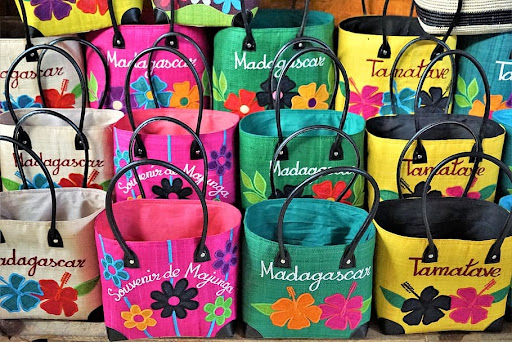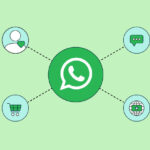Unlock the door to creative possibilities in e-commerce, where exclusivity meets innovation: limited edition Print-on-Demand (POD) products. Imagine capturing the essence of a season in a design, collaborating with influencers to create unique merchandise, or riding the wave of viral pop culture references—all while tapping into the timeless allure of scarcity.
In this blog, we’re about to embark on an exciting journey into the art of crafting limited-edition POD products. From seasonal collections to eco-conscious initiatives and personalized creations, we’ll explore many ideas that ignite your imagination and leave your customers craving the exclusive.
Seasonal Collections
Align your limited edition products with the seasons. It could mean holiday-themed apparel, summer beach towels, or cozy winter blankets. By creating items that capture the essence of each season, you’ll pique the interest of customers looking to refresh their wardrobes or homes. Consider partnering with an expert service like Swagify to bring your seasonal collection ideas to life.

Collaborations
Team up with other artists, influencers, or brands to create unique limited edition products. These collaborations can bring a fresh perspective to your designs and introduce your work to a new audience. Be sure to choose collaborators whose style and values align with your own.
Commemorative Events
Mark special occasions with limited edition items. Whether it’s the anniversary of your brand’s launch, a significant milestone, or a noteworthy cultural event, creating commemorative merchandise can generate excitement among your followers and customers.
Pop Culture References
Leverage the popularity of trending movies, TV shows, or memes. Design limited edition products that play on popular culture references while staying within copyright boundaries. Be quick to respond to viral trends to capture their momentum.
Exclusive Art Prints
For artists and illustrators, limited edition art prints can be lucrative. Create a numbered series of high-quality photographs of your artwork, signed and authenticated. It appeals to art collectors and enthusiasts.
Personalized Products
Offer limited edition personalized products like custom mugs, phone cases, or apparel. Customers love the opportunity to create something unique for themselves or as a special gift for a loved one.
Vintage-Inspired Designs
Give your limited edition products a nostalgic twist by drawing inspiration from vintage aesthetics. Whether it’s retro typography, classic design motifs, or vintage color palettes, these designs can evoke feelings of nostalgia and resonate with a broad audience.
Limited Time Offerings
Create a sense of urgency by offering limited edition products for a short time frame. This tactic encourages customers to make quick decisions and can boost sales during promotional periods.
Environmental Initiatives
Appeal to eco-conscious consumers by launching limited edition products tied to environmental causes. For example, you can offer merchandise that supports reforestation efforts or promotes sustainable living.
Mystery Boxes
Add an element of surprise by offering limited edition mystery boxes. Customers won’t know what they’re getting, creating excitement and anticipation. Ensure that the mystery items are of high quality to delight your customers.
Geographic Themes
Explore limited edition designs inspired by different regions, cities, or landmarks. This approach can resonate with locals and tourists, creating a solid connection with a sense of place.
Social Impact Collections
Design limited edition products that raise awareness or funds for critical social causes. It contributes positively to society and attracts customers who align with those causes.
Limited Edition Subscriptions
Offer a subscription model where customers receive exclusive limited edition products regularly. It can create a loyal fan base and ensure a steady revenue stream.
Customize Existing Bestsellers
Take your best-selling products and create limited-edition versions with unique twists. It brings new life into your most popular items and generates renewed interest.
Interactive Designs
Engage your audience by allowing them a say in the design process. Run polls or contests to determine the elements of your limited edition products, fostering a sense of community and involvement.
How Many Units Should I Produce For A Limited Edition?
The number of units you should produce for a limited edition Print-on-Demand (POD) product depends on several factors, including your target audience, marketing strategy, production capabilities, and the perceived rarity of the product. Here are some considerations to help you determine the correct quantity:
Customer Base
Consider the size of your existing customer base and their buying behavior. You can produce more units if you have a large and active customer base. For a smaller, niche audience, fewer POD units may be appropriate.
Marketing Reach
Evaluate your marketing reach and promotional efforts. A well-planned marketing campaign can create more demand, allowing you to produce a larger quantity.
Product Type
Different types of products may have different demand levels. Apparel items like t-shirts and hoodies are popular choices for limited editions. They are often produced in larger quantities. However, less common or custom items may warrant smaller runs.
Perceived Rarity
The exclusivity and perceived rarity of the product play a significant role. Consider producing a smaller quantity if you want the product to feel genuinely exclusive. Conversely, a more considerable amount may be appropriate if you want to reach a broader audience.
Production Capacity
Assess your production capabilities or the capabilities of your chosen POD provider. Ensure that they can handle the production volume within your desired time frame.
Budget and Risk Tolerance
Your budget and risk tolerance are essential factors. Producing a significant quantity can be more costly and risky if the product sells differently than expected. Start conservatively and increase amounts in subsequent releases if demand warrants it.
Previous Experience
Suppose you have experience with similarly limited edition releases. In that case, you can use past sales data and customer feedback to decide on quantity.
Seasonality and Trends
Consider any seasonality or trends that may affect demand for your product. For example, holiday-themed limited editions might have a shorter sales window.
Scarcity vs. Exclusivity
Strike a balance between creating scarcity and maintaining exclusivity. Too few units may sell out quickly but limit your revenue potential. Too many units may dilute the feeling of exclusivity.
Wrap Up
The world of limited edition POD products is ripe with opportunities for creative expression and entrepreneurship. By leveraging these ideas and staying attuned to emerging trends and customer preferences, you can captivate your audience and make a lasting mark in the world of e-commerce. Remember that the key to a successful limited edition product lies in balancing scarcity, quality, and creativity.





